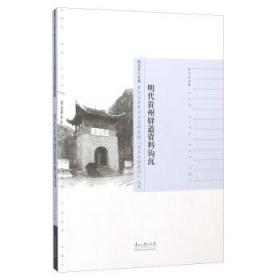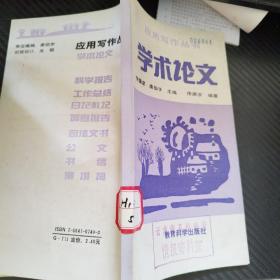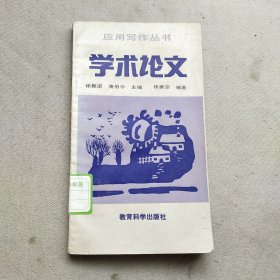
全新正版 英汉学术论文中的作者身份构建对比研究 英文
¥ 38 ¥ 38 九五品
库存3件
北京海淀
认证卖家担保交易快速发货售后保障
作者份构建对比研究 英文
出版社浙江大学
ISBN9787308123754
出版时间2013-10
版次1
装帧平装
开本16开
定价38元
上书时间2014-06-26
- 在售商品 暂无
- 平均发货时间 5小时
- 好评率 暂无
- 最新上架
商品详情
- 品相描述:九五品
- 商品描述
-
基本信息
书名:英汉学术论文中的作者身份构建对比研究 英文
原价:38元
作者:吴格奇
出版社:浙江大学
出版日期:10/01/2013 00:00:00
ISBN:9787308123754
字数:400000
页码:217
版次:1
装帧:平装
开本:16开
商品重量:
编辑推荐
内容提要
Hm.语言应用
目录
Chapter 1 Introduction1.1 The Social View Towards Research Articles1.2 Objectives of the Study1.3 Significance of the Study1.4 Outline of the BookChapter 2 Key Concepts Defined2.1 The RA Genre2.1.1 The Concept of the RA2.1.2 Characteristics of the RA2.2 Identity2.2.1 The Concept of Identity2.2.2 Discoursal Construction of Identity2.2.3 Writer Identity in Academic Writing2.3 The RA Genre and Authorial IdentityChapter 3 Literature Review3.1 Interaction in Academic Writing3.1.1 Under Different Terms3.1.2 On Different Aspects3.2 Interaction in RA Genre3.3 Identity Construction in Academic Discourse3.3.1 Theoretical Research on Identity Construction in AcademicWriting3.3.2 Practical Research on Identity Construction in AcademicWriting3.4 Identity Construction in RA GenreChapter 4 TheoreticalFramework4.1 Hyland‘s Model of Academic Interaction4.1.1 Stance and Writer-oriented Interaction4.1.2 Engagement and Reader-oriented Interaction4.2 Genre Analysis4.2.1 Traditions of Genre Analysis Theories4.2.2 Genre Analysis of RAs4.3 The Framework Used in This Study4.3.1 Motivations for the Present Framework4.3.2 The Framework for Analyzing lnteractional Features inRAs...Chapter 5 Research Design5.1 Data Selection and Corpus Building5.1.1 Data Selection5.l.2 Corpus Building5.2 Data Analysis5.2.1 Annotation5.2.2 Method of AnalysisChapter 6 Frequency of Stance and Engagement Markers in English andChinese RAs6.1 Frequency of Stance Markers in English and Chinese RAs6.1.1 Hedges in English and Chinese RAs6.1.2 Boosters in English and Chinese RAs6.1.3 Attitude Markers in English and Chinese RAs6.1.4 Self-mention in English and Chinese RAs6.1.5 Summary of Stance Markers Used in RAs6.2 Frequency of Engagement Markers in English and ChineseRAs6.2.1 Reader pronouns in English and Chinese RAs6.2.2 Personal Asides in English and Chinese RAs6.2.3 Appeals to Shared Knowledge in English and Chinese RAs.6.2.4 Directives in English and Chinese RAs6.2.5 Questions in English and Chinese RAs6.2.6 Summary of Engagement Markers Used in RAsChapter 7 Distribution of Stance and Engagement Markers AcrossGeneric Structure in English and Chinese RAs7.1 Distribution of Stance Markers Across Generic Structure inEnglish and Chinese RAs7.1.1 Hedges Across Generic Structure7.1.2 Boosters Across Generic Structure7.1.3 Attitude Markers Across Generic Structure7.1.4 Self-mention Across Generic Structure7.1.5 Summary of Stance Markers Across Generic Structure in Englishand Chinese RAs7.2 Distribution of Engagement Markers Across Generic Structure inEnglish and Chinese RAs7.2.1 Reader Pronouns Across Generic Structure7.2.2 Personal Asides Across Generic Structure7.2.3 Appeals to Shared Knowledge Across Generic Structure inAs7.2.4 Directives Across Generic Structure7.2.5 Questions Across Generic Structure7.2.6 Summary of Engagement Markers in English and ChineseRAsChapter 8 Manifestations of Authorial Identity Construction8.1 Manifestations of the RA Writer’s Identity8.2 Social and Psychological Features Influencing AuthorialIdentity Construction8.2.1 Reconciliation Between Ethical Canons and CognitiveConstructs8.2.2 Beliefs About Utterance Production and Interpretation8.2.3 Perceptions of Face8.2.4 Implementation of Academic NormsChapter 9 Conclusion9.1 Summary of Major Findings9.2 Implications of the Current Research9.2.1 Implications for RA Writing9.2.2 Implications for the Teaching of Academic Writing9.3 Limitations of the Research9.4 Recommendations for Future Research BibliographyAppendicesAppendix 1 English and Chinese RAs Used as Data of This StudyAppendix 2 Excerpts of English and Chinese RAsIndex
作者介绍
序言
相关推荐
— 没有更多了 —





















以下为对购买帮助不大的评价